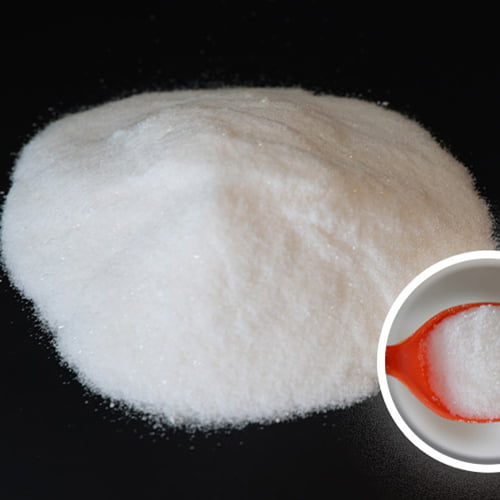Introduction
Sodium formate, a simple salt of formic acid, plays a crucial role in various industrial and chemical processes. It is widely used as a buffering agent, preservative, and in the production of formic acid. One of the most important reactions involving sodium formate is its decomposition. Understanding sodium formate decomposition is essential for industries that rely on this chemical, as the decomposition process affects the efficiency and safety of various applications. This comprehensive guide will explore the mechanisms, factors influencing decomposition, and the implications of sodium formate decomposition in industrial settings.
What is Sodium Formate Decomposition?

Sodium formate decomposition refers to the chemical process in which sodium formate (HCOONa) breaks down into other compounds when subjected to heat or other catalytic conditions. The primary products of sodium formate decomposition are sodium oxalate, carbon dioxide, and hydrogen gas. The reaction typically occurs at elevated temperatures and can be influenced by the presence of catalysts.
Chemical Equation for Sodium Formate Decomposition
The decomposition of sodium formate can be represented by the following chemical equation:
[ 2HCOONa \rightarrow Na_2C_2O_4 + H_2 + CO_2 ]
In this reaction, two molecules of sodium formate decompose to produce one molecule of sodium oxalate, one molecule of hydrogen gas, and one molecule of carbon dioxide.
Factors Influencing Sodium Formate Decomposition
Several factors influence the rate and outcome of sodium formate decomposition. Understanding these factors is crucial for controlling the decomposition process in industrial applications.
Température
Temperature is the most significant factor affecting the decomposition of sodium formate. As the temperature increases, the rate of decomposition also increases. The decomposition typically begins at temperatures around 360°C and accelerates as the temperature rises. However, excessive temperatures can lead to the formation of unwanted byproducts, which may affect the overall efficiency of the process.
Catalyseurs
The presence of catalysts can significantly impact the rate of sodium formate decomposition. Common catalysts used in this process include metal oxides, such as copper oxide and iron oxide. These catalysts lower the activation energy required for the reaction, allowing decomposition to occur at lower temperatures and increasing the reaction rate.
Pression
Pressure also plays a role in the decomposition process. Higher pressures can suppress the formation of gaseous products, such as hydrogen and carbon dioxide, leading to different reaction pathways and byproducts. Conversely, lower pressures may promote the release of these gases, enhancing the decomposition rate.
Concentration of Sodium Formate
The concentration of sodium formate in the reaction mixture affects the decomposition rate. Higher concentrations lead to a higher rate of decomposition due to the increased availability of reactant molecules. However, extremely high concentrations can cause issues with heat transfer and mixing, leading to incomplete decomposition or the formation of byproducts.
Presence of Impurities
Impurities in the sodium formate or the reaction environment can influence the decomposition process. Certain impurities may act as catalysts or inhibitors, altering the reaction rate and the composition of the products. Therefore, it is important to use high-purity sodium formate and maintain a controlled reaction environment.
Applications of Sodium Formate Decomposition
Sodium formate decomposition has several important applications in various industries. Understanding the decomposition process allows for better control and optimization of these applications.
Hydrogen Production
One of the key applications of sodium formate decomposition is the production of hydrogen gas. Hydrogen is a valuable resource in industries such as chemical manufacturing, fuel cells, and energy production. The decomposition of sodium formate provides a convenient and efficient method for generating hydrogen, especially when conducted under controlled conditions with appropriate catalysts.
Sodium Oxalate Production
Sodium oxalate, one of the primary products of sodium formate decomposition, has several industrial uses. It is commonly used as a reducing agent in chemical processes, as a precipitating agent in the production of rare earth metals, and as a bleaching agent in the textile industry. The controlled decomposition of sodium formate allows for the efficient production of sodium oxalate for these applications.
Carbon Dioxide Generation
Carbon dioxide generated from the decomposition of sodium formate can be captured and used in various applications, such as in carbonated beverages, chemical synthesis, and as a greenhouse gas for promoting plant growth in controlled environments. The production of carbon dioxide through sodium formate decomposition is often preferred due to its relatively low environmental impact compared to other methods.
Buffering Agent in Chemical Reactions
Sodium formate is commonly used as a buffering agent in various chemical reactions. Its decomposition can influence the pH of the reaction environment, making it a critical factor in processes where precise pH control is required. Understanding the decomposition process allows for better management of pH levels in these reactions.
Table: Comparison of Decomposition Conditions for Sodium Formate
The following table provides a comparison of different conditions that influence sodium formate decomposition, highlighting the effects of temperature, catalysts, and pressure on the reaction.
| Condition | Temperature (°C) | Catalyst | Pressure (atm) | Des produits |
|---|---|---|---|---|
| Standard Decomposition | 360-400 | None | 1 | Sodium Oxalate, Hydrogen, Carbon Dioxide |
| Catalyzed Decomposition | 300-350 | Copper Oxide | 1 | Sodium Oxalate, Hydrogen, Carbon Dioxide |
| High-Pressure Decomposition | 360-400 | None | >1 | Sodium Oxalate, Less CO2, More Complex Byproducts |
This table illustrates how different conditions can influence the decomposition process and the composition of the products. By carefully selecting the reaction conditions, industries can optimize the decomposition process to achieve desired outcomes.
Safety Considerations in Sodium Formate Decomposition

While sodium formate decomposition is a valuable process in various industries, it is essential to consider safety precautions when conducting the reaction. The production of hydrogen gas, in particular, poses a risk of explosion if not properly managed. Here are some key safety considerations:
Ventilation
Ensure that the reaction area is well-ventilated to prevent the accumulation of hydrogen gas. Proper ventilation reduces the risk of explosion and helps maintain a safe working environment.
Contrôle de la température
Carefully monitor and control the temperature during the decomposition process. Excessive temperatures can lead to runaway reactions and the formation of dangerous byproducts. Using temperature sensors and automated control systems can help maintain safe operating conditions.
Handling of Catalysts
When using catalysts in the decomposition process, handle them with care to avoid contamination and unintended reactions. Ensure that catalysts are stored in a dry, cool environment and follow safety guidelines for their use.
Pressure Management
If the decomposition is conducted under high pressure, ensure that the reaction vessel is designed to withstand the pressure. Regularly inspect pressure relief valves and other safety devices to prevent accidents.
Conclusion
Sodium formate decomposition is a critical process with wide-ranging applications in industries such as hydrogen production, chemical manufacturing, and environmental management. By understanding the factors that influence decomposition, including temperature, catalysts, pressure, and concentration, industries can optimize the process for maximum efficiency and safety. Whether used for producing hydrogen gas or sodium oxalate, sodium formate decomposition plays a vital role in modern industrial processes.
FAQ
What are the primary products of sodium formate decomposition?
The primary products of sodium formate decomposition are sodium oxalate, hydrogen gas, and carbon dioxide.
How does temperature affect sodium formate decomposition?
Higher temperatures generally increase the rate of sodium formate decomposition. The process typically begins around 360°C and accelerates as the temperature rises.
Can sodium formate decomposition be catalyzed?
Yes, catalysts such as copper oxide and iron oxide can lower the activation energy of the reaction, allowing decomposition to occur at lower temperatures and increasing the reaction rate.
What safety precautions should be taken during sodium formate decomposition?
Key safety precautions include ensuring proper ventilation, controlling the temperature, handling catalysts carefully, and managing pressure to prevent accidents.
What are the industrial applications of sodium formate decomposition?
Sodium formate decomposition is used in hydrogen production, sodium oxalate production, carbon dioxide generation, and as a buffering agent in chemical reactions.



